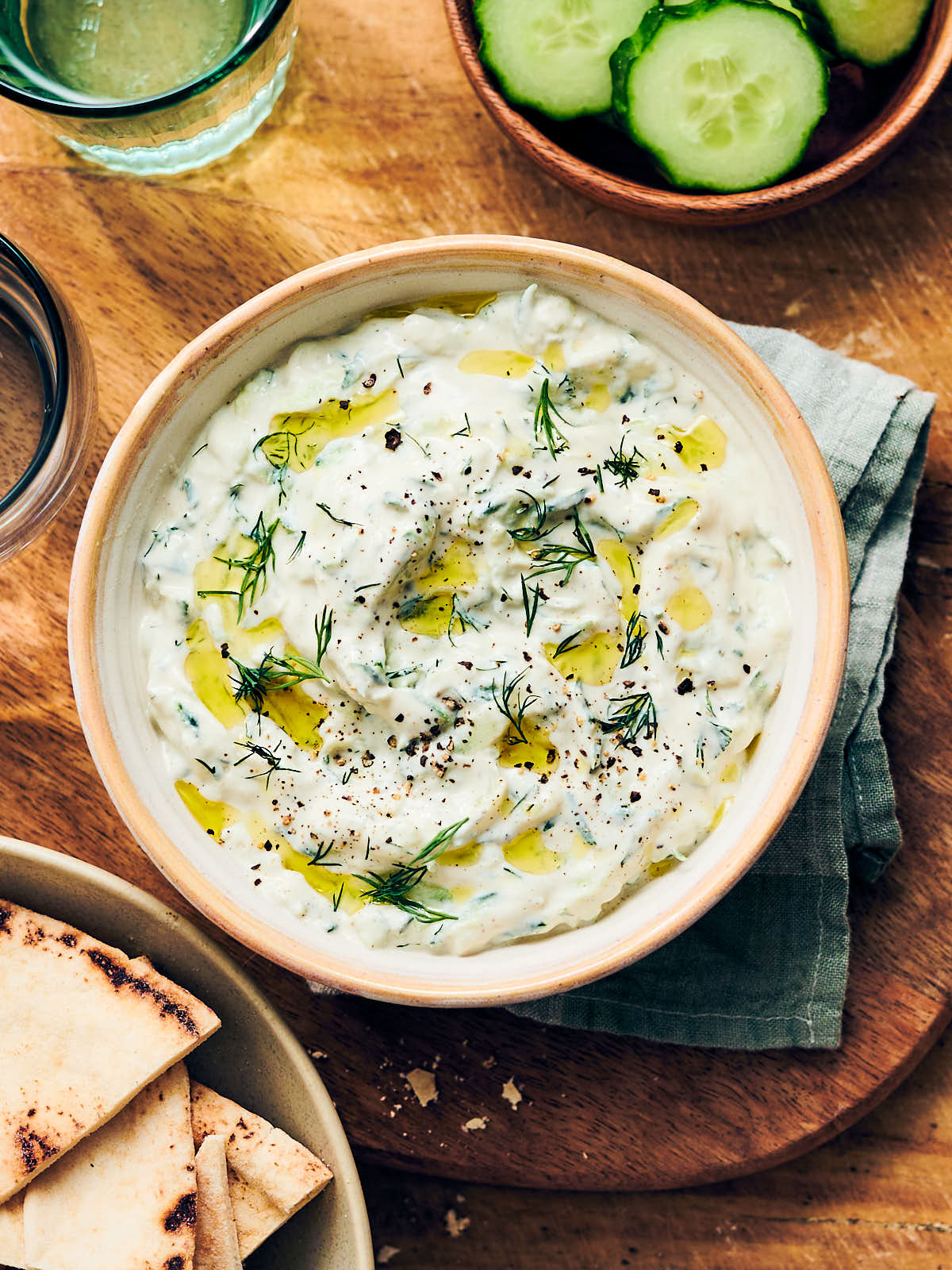
This creamy Vegan Tzatziki is delicious, easy to make, and really versatile. We've tested a lot of different plant-based tzatziki sauces over the years. While many recipes rely on store bought plant-based yogurt, the truth is that every brand varies in taste and texture. So, we don't bother using vegan yogurt when making the best vegan tzatziki. Instead, a cashew tzatziki produces the most reliably delicious results, each and every time. Try it and see for yourself!
We're so obsessed with this vegan tzatziki that we use it in Vegan Greek Gyros, Collard Green Wraps, Falafel Burgers and so much more. We even included an updated version in our debut print cookbook, Evergreen Kitchen!
Jump to:
Why you'll love this recipe
- More reliable results: Plant-based yogurts vary significantly in taste and texture. To avoid disappointing results, this recipe skips vegan yogurt entirely. Our recipe yields a creamy and delicious tzatziki, each and every time.
- Undetectably vegan: This vegan tzatziki tastes just like the real deal. We often serve it at parties and nobody guesses it's vegan / dairy-free!
- Versatile: Make a batch (or two) for the week and you'll have a delicious and healthy sauce to serve with just about anything! This vegan tzatziki is delicious with sandwiches, grain bowls, falafel, or served as a dip with veggies and pita.
Recipe video
Watch a step-by-step video and learn how to make this recipe!

Ingredients (and substitutes)
You only need a handful of ingredients to make this easy vegan tzatziki.
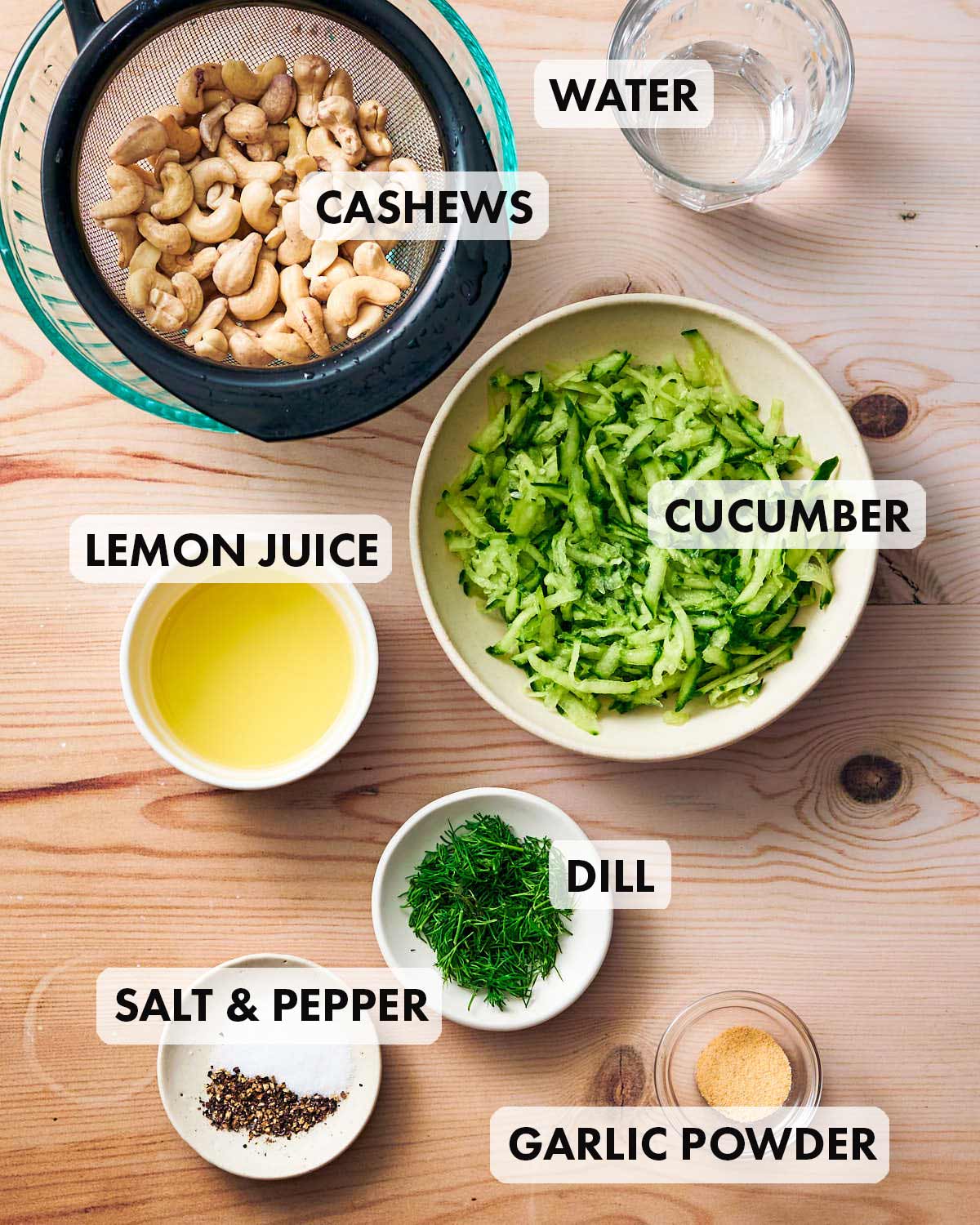
- Cashews: Raw cashews form the base for this sauce. They blend up super creamy. We prefer using cashews as the base for tzatziki—rather than plant based yogurt—because they are very neutral tasting and the results are more reliable.
- Cucumber: It's not tzatziki without cucumber! We use English cucumber for this, but you could substitute with mini cucumbers instead (aim for 6 ounces / 170 g).
- Dill: This recipe calls for fresh dill. In a pinch you could substitute for dried dill instead. If substituting dried dill, you'll need one-third of the amount because it is more potent than the fresh stuff (for example: 1 tablespoon fresh dill = 1 teaspoon dried dill).
- Lemon Juice: Use fresh lemon juice for the brightest flavor, which best mimics the sourness of yogurt. And, feel free to add more to taste.
- Garlic Powder: We prefer garlic powder in this tzatziki recipe because it's less intense than fresh garlic. It tends to be more "crowd-pleasing" when entertaining! But if you prefer to use fresh garlic, start with a small amount and add more to taste.
Find the recipe card below for the complete recipe, including all ingredients and instructions.

How to make (step-by-step photos)
This cashew tzatziki is surprisingly fast to make. Here are the recipe steps:
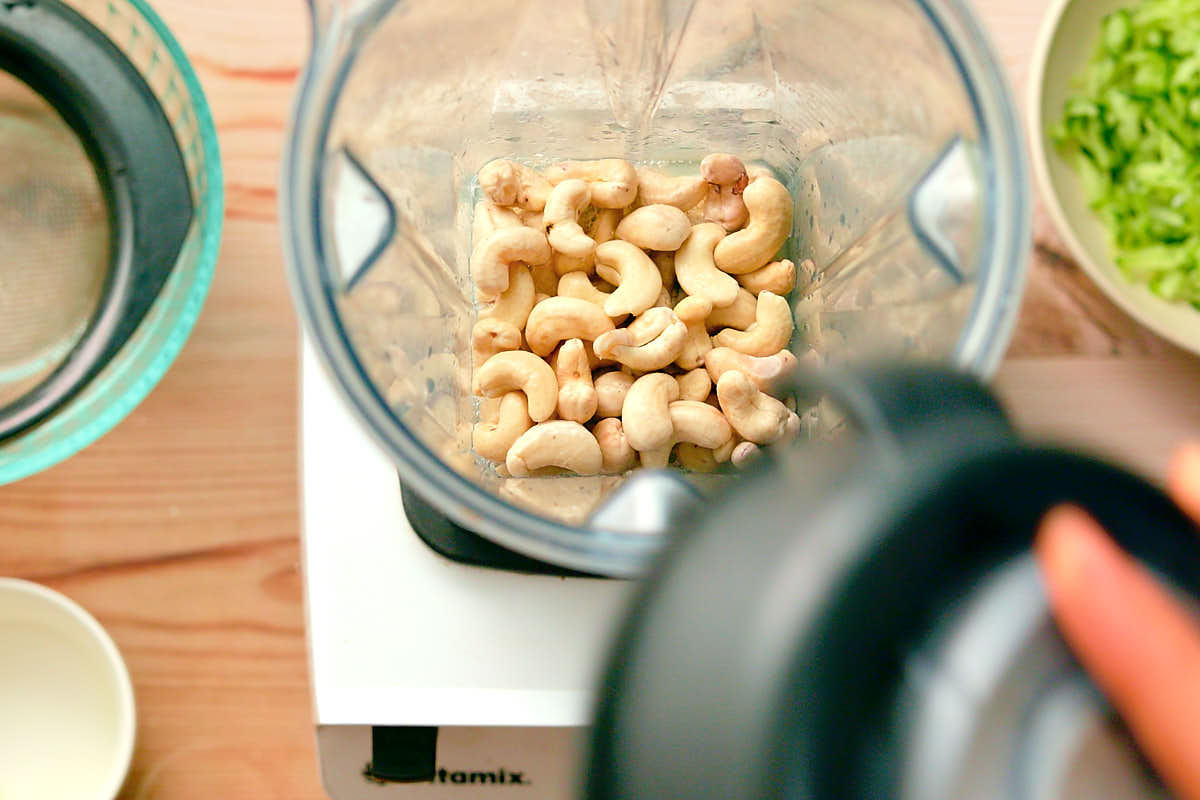
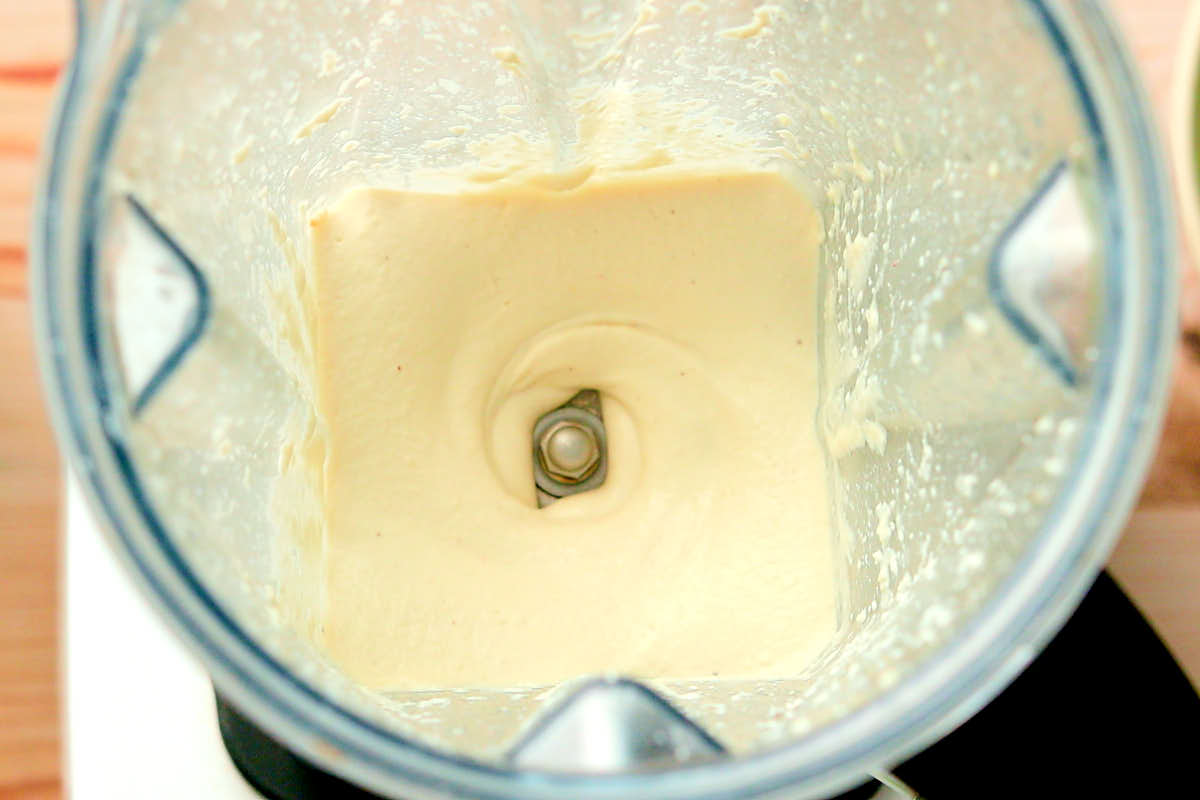
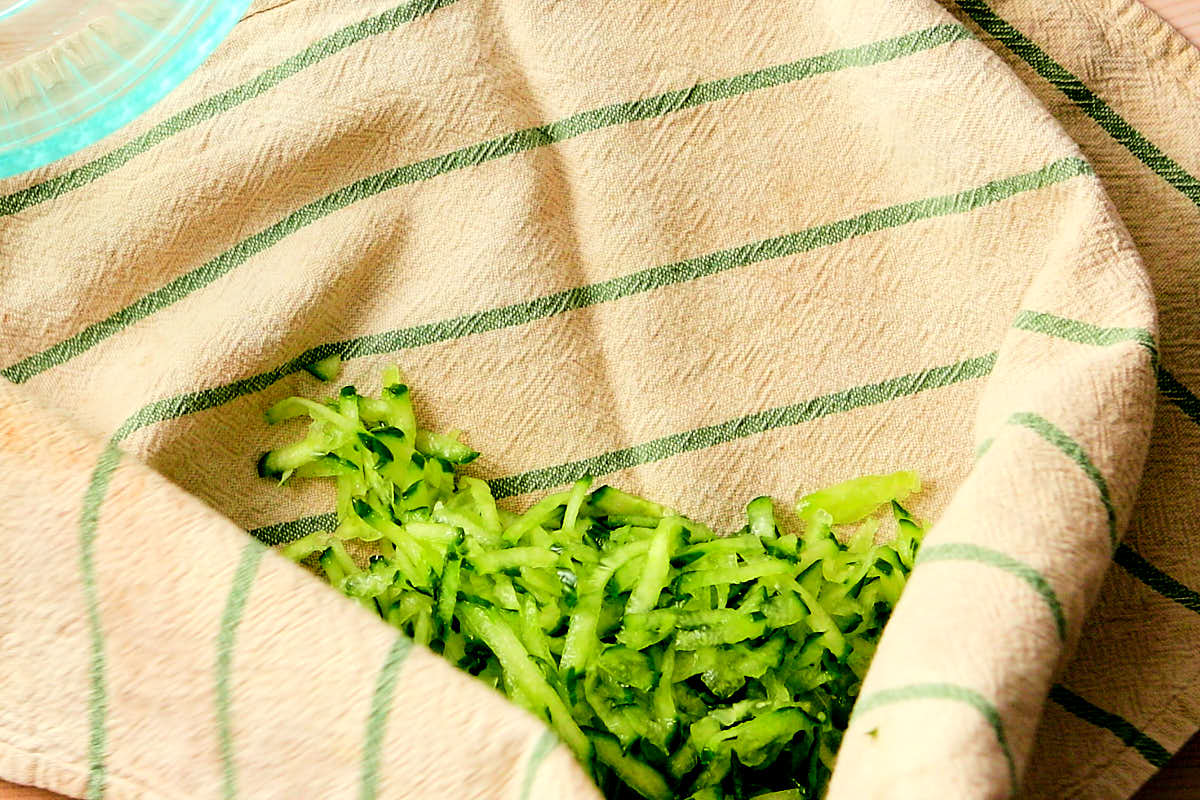
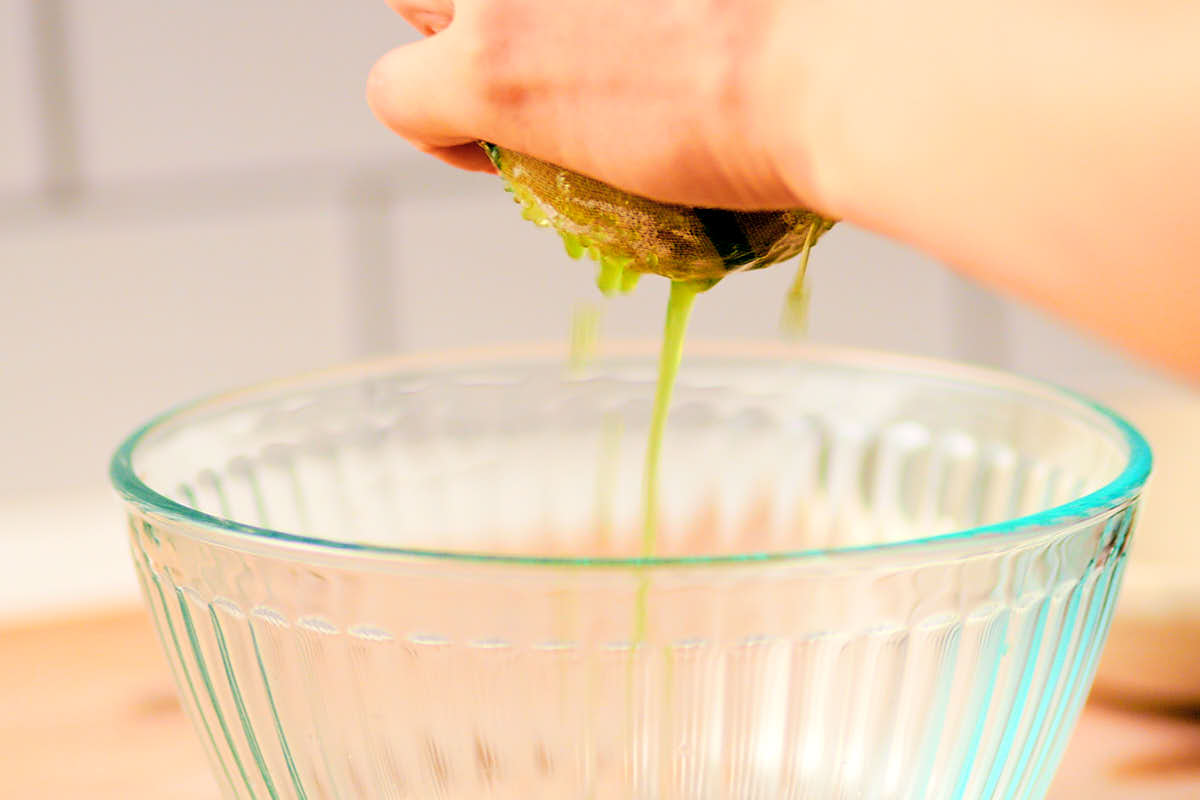
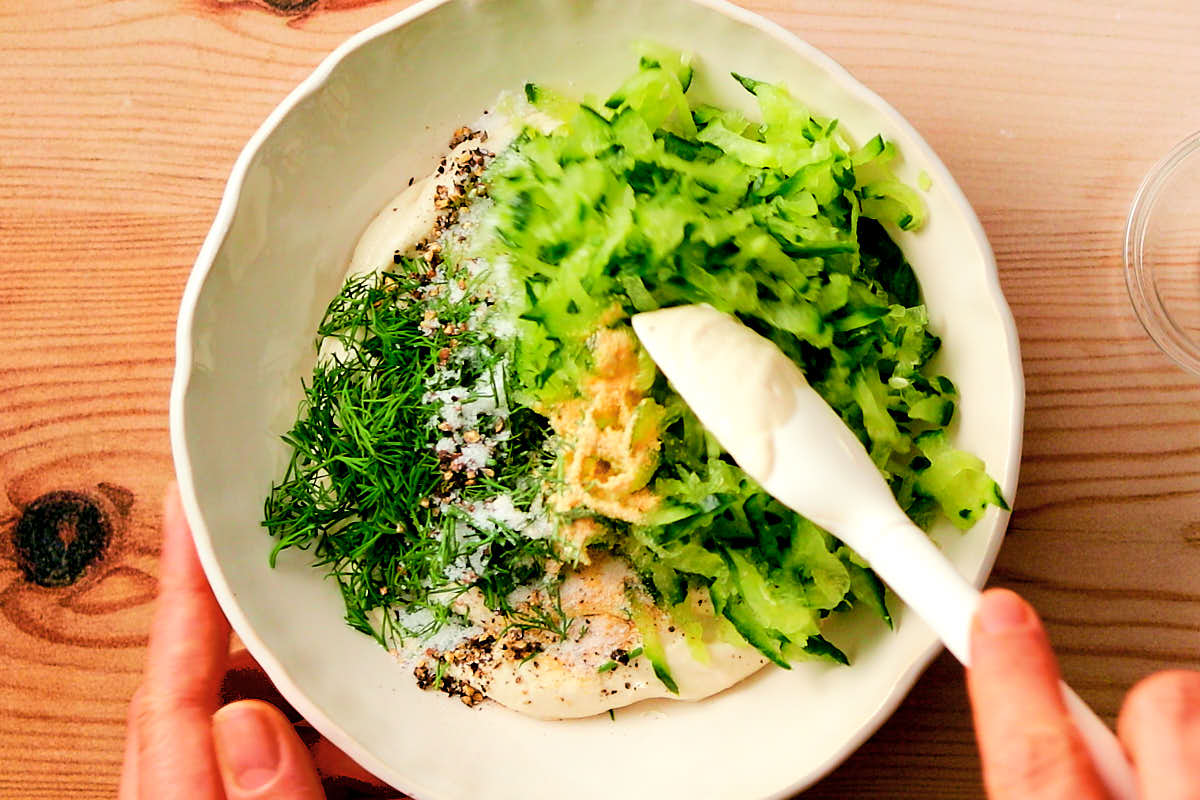
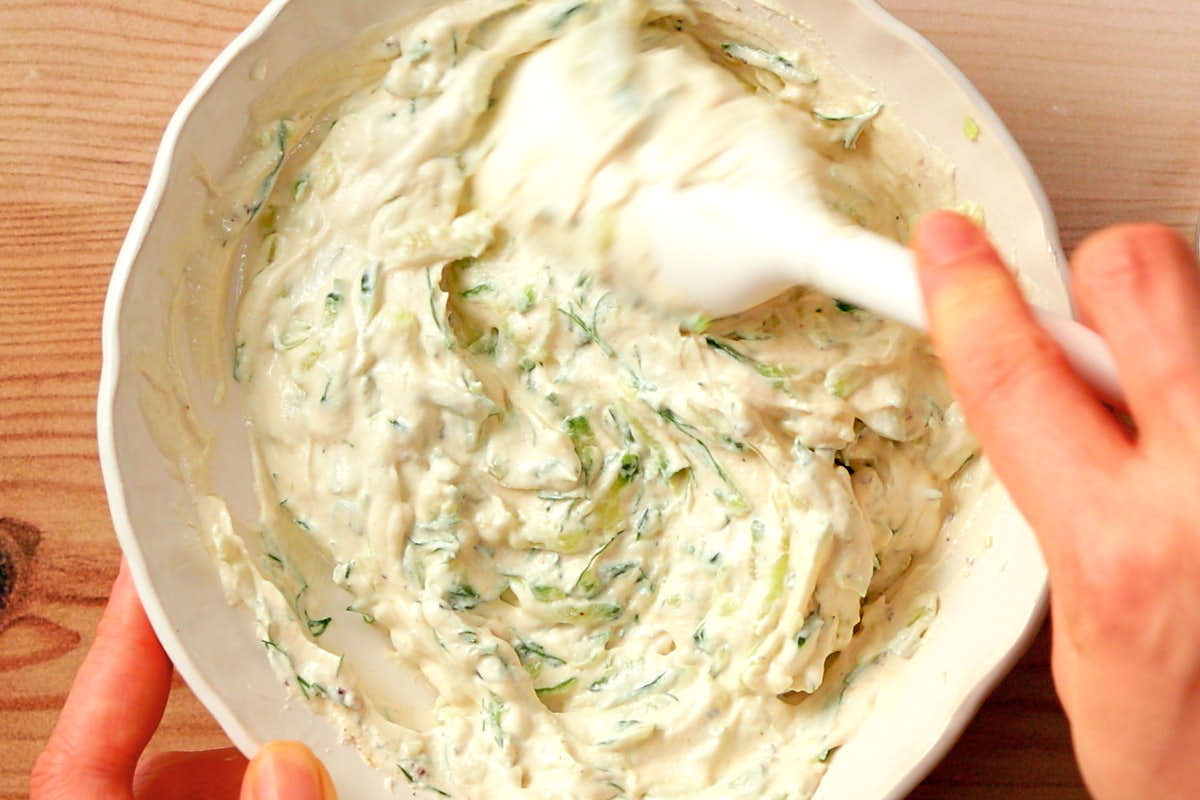
Find the recipe card below for the complete recipe, including all ingredients and instructions.

Tips and Serving suggestions
- Don't skip drainingthe cucumbers: Squeezing out the liquid from the cucumbers helps to ensure your tzatziki sauce is thick and creamy (not watery!).
- You can use a clean kitchen towel, nut milk bag or cheesecloth for squeezing the grated cucumber.
- Best served chilled: If you're in a rush, you can serve tzatziki immediately after making it. But, it is most refreshing served cold, so refrigerate it if you have time!
- Consider doubling the recipe: If your blender has a wide container (like this), then you may need to double the recipe so there's more mass to circulate the blades. As you'll see in our recipe video, a single batch works just fine in a classic/narrow container (like this).
- Serving suggestions: This vegan tzatziki is delicious served with salads, mains, fries, sandwiches/burgers, wraps, you name it! Here are some recipe pairings to try:
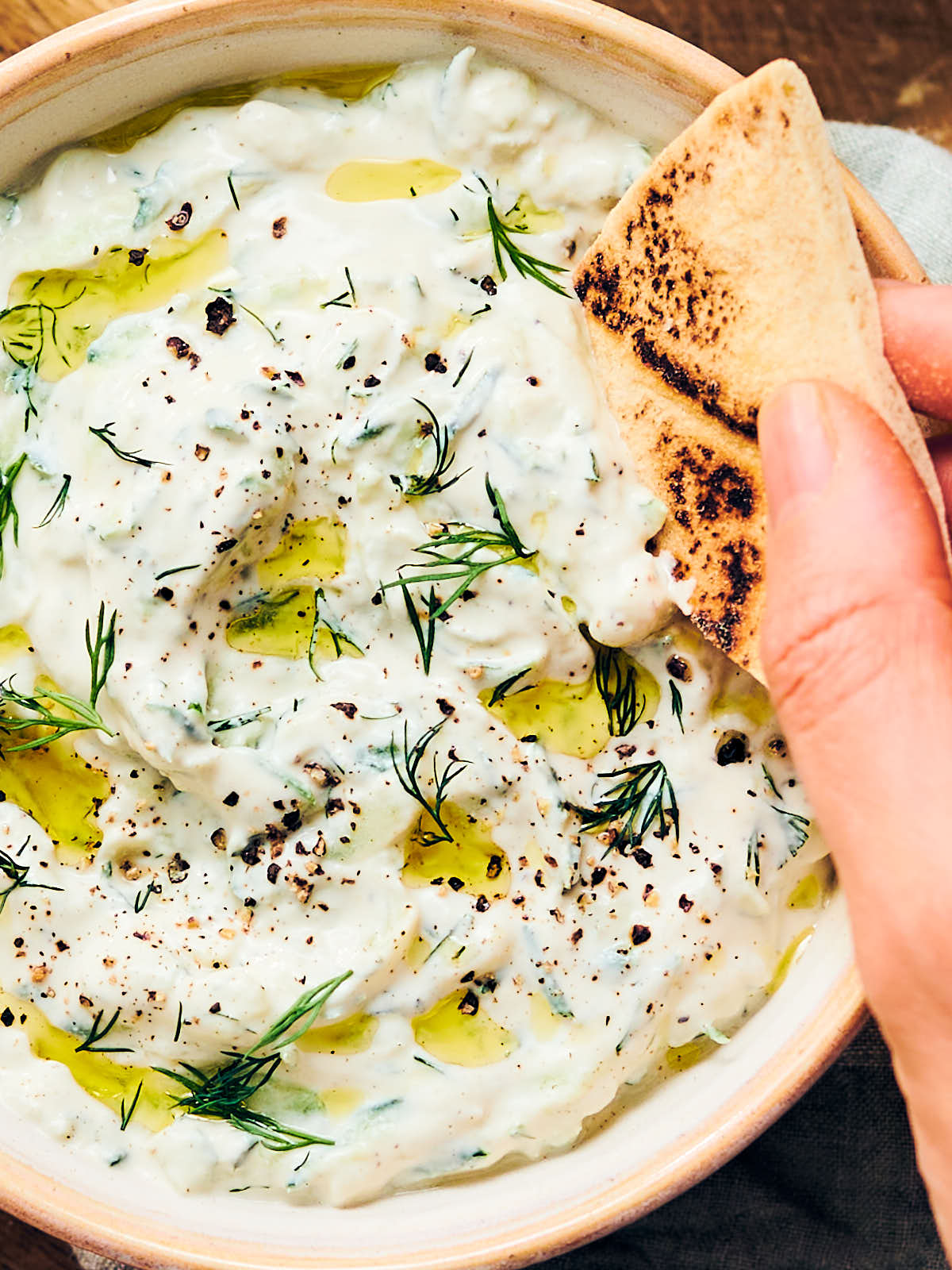
Love this recipe? Please leave a 5-star 🌟🌟🌟🌟🌟 review below!

📖 Recipe
Best Vegan Tzatziki
Ingredients
- ¾ cup raw cashews, soaked and rinsed (see note 1)
- ¼ cup fresh lemon juice (about 2 lemons)
- 3 tablespoons cold water
- ½ English cucumber
- 1 tablespoon chopped fresh dill (more for garnish, optional)
- ½ teaspoon garlic powder
- ½ teaspoon fine sea salt
- Black pepper (to taste)
Instructions
- Blend cashew base (see note 2): Add cashews, lemon juice, and water to a high-speed blender. Blend until smooth and creamy, scraping down the sides as needed. Set aside.
- Prep cucumber: Grate cucumber using the large holes on a box grater. Transfer cucumber to a clean kitchen towel, nutmilk bag, or cheesecloth. Squeeze out as much liquid as you can. Set aside.
- Mix: To a medium bowl, combine blended cashew base, drained cucumber, dill. garlic powder, and salt. Stir well to mix. Add pepper to taste and adjust seasonings if needed. (If you prefer your tzatziki to be more runny, you can thin it with a bit more cold water). Refrigerate until cool.
Notes
- How to soak cashews: Cashews should be pre-soaked until soft when squeezed between your fingertips. Add cashews to a heatproof bowl and cover them with boiling water, letting them sit for about 30 minutes to soften. Or alternatively, soak in room temperature water for 6 to 8 hours.
- Blender container: If you have an extra-wide blender container (like this), you'll likely need to double the recipe to create enough volume for the blades to spin effectively.
- Yield: Makes about 1¼ cups per batch. Assumes ¼ cup per serving.
- Serving suggestions: Enjoy as a dip with fresh veggies, bread, soft pita, or Air Fryer Pita Chips. Also delicious served with Skillet Pan Spanakopita, Oven Baked Falafel, and Vegan Gyros.

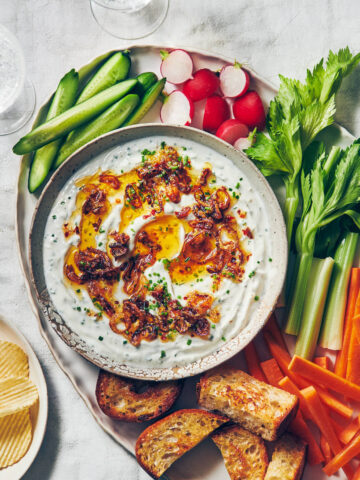
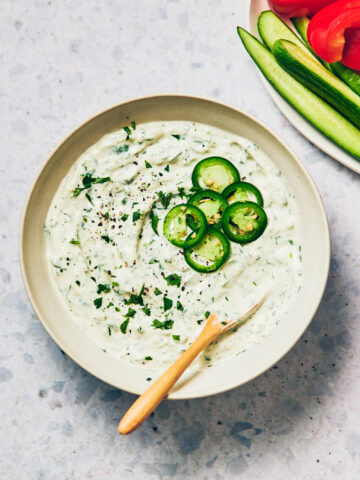
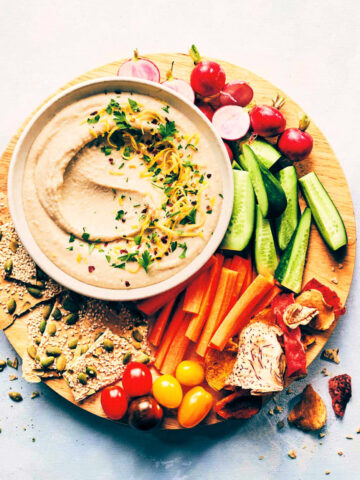

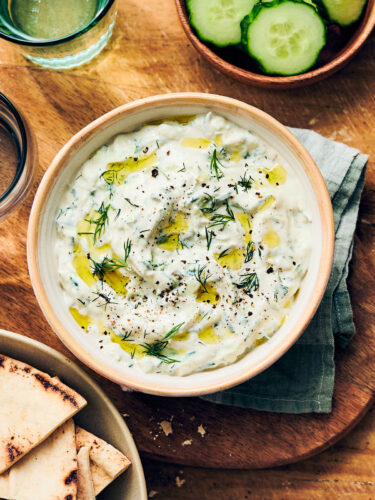
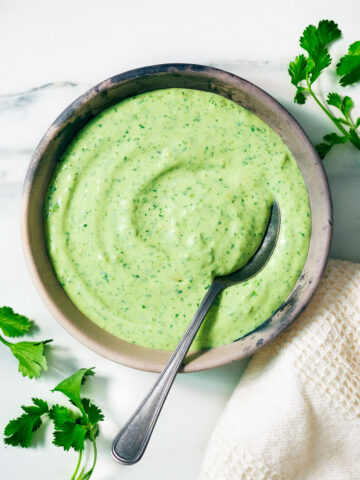
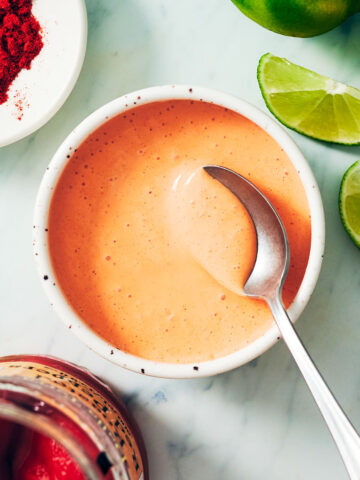
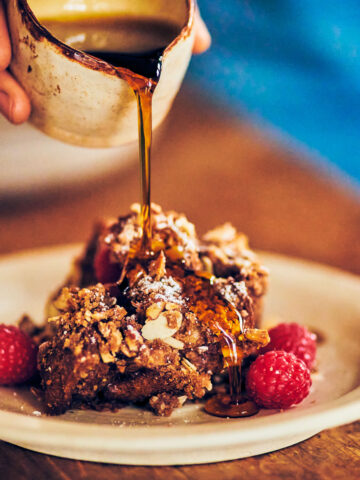
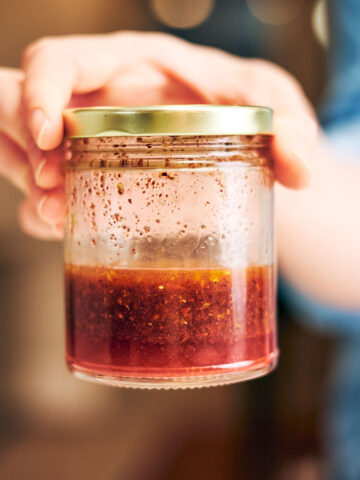
Justine says
Made this for a dip platter with friends and nobody could tell it was vegan... \wqould have never thought to use cashews but it works so well. Will definitely be making again.
bri says
Hi Justine! Yay so happy to hear that. We do the exact same thing - and everyone is always so surprised it's dairy-free. Glad to hear this recipe was a hit!
Amy says
This was excellent! Perfect on top of falafel with a side greek salad. For others, don't cut the recipe in half if using a Vitamix because there won't be enough volume for it to blend.